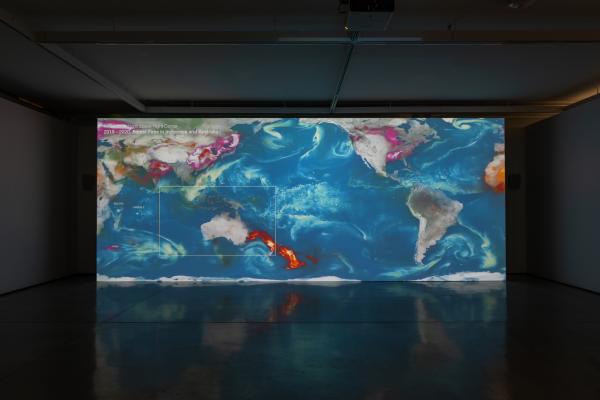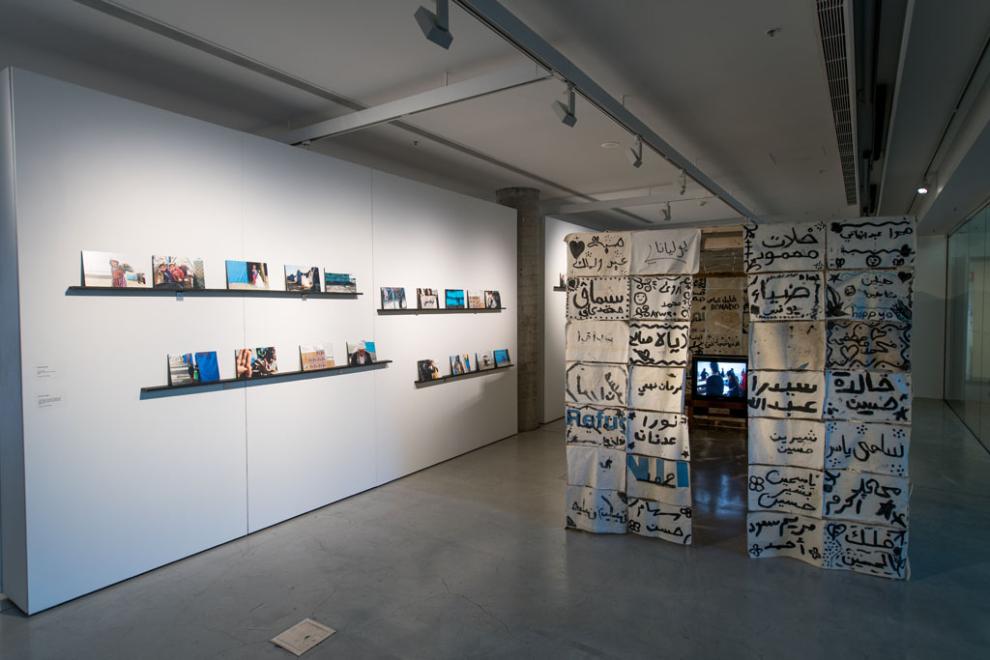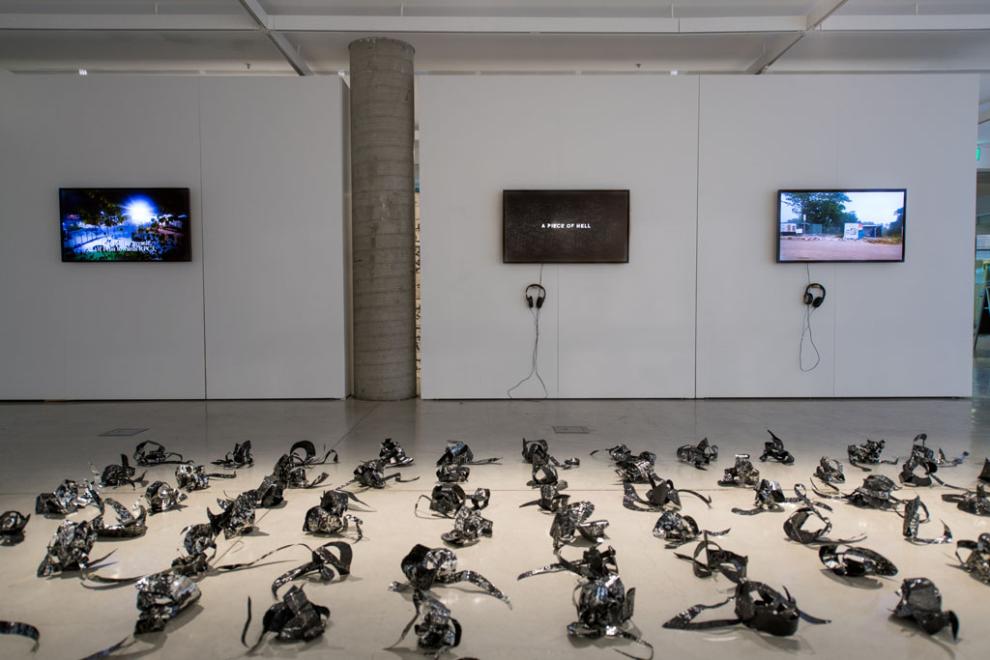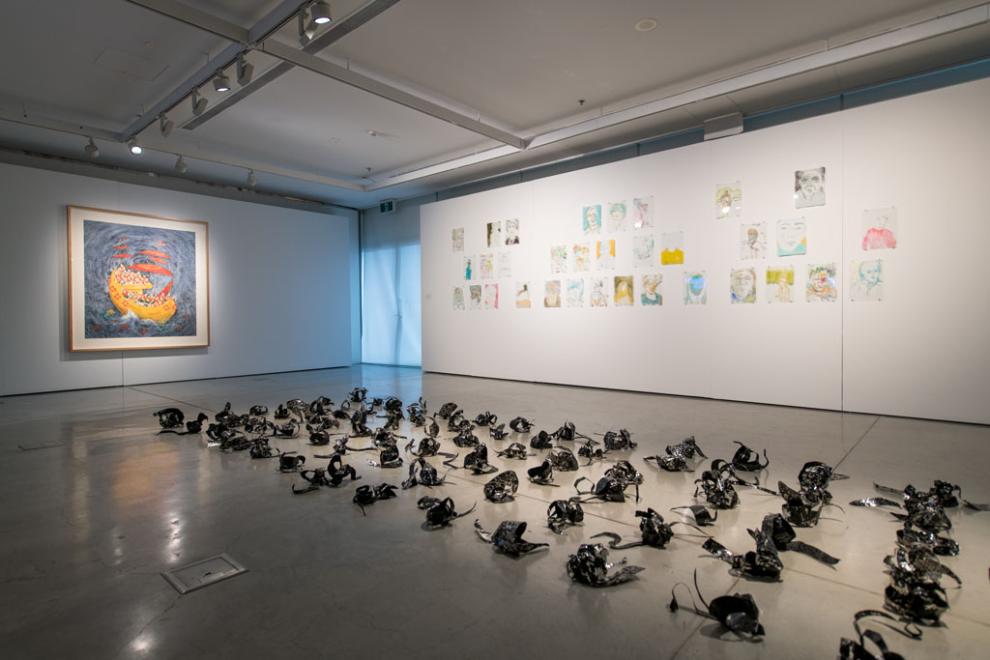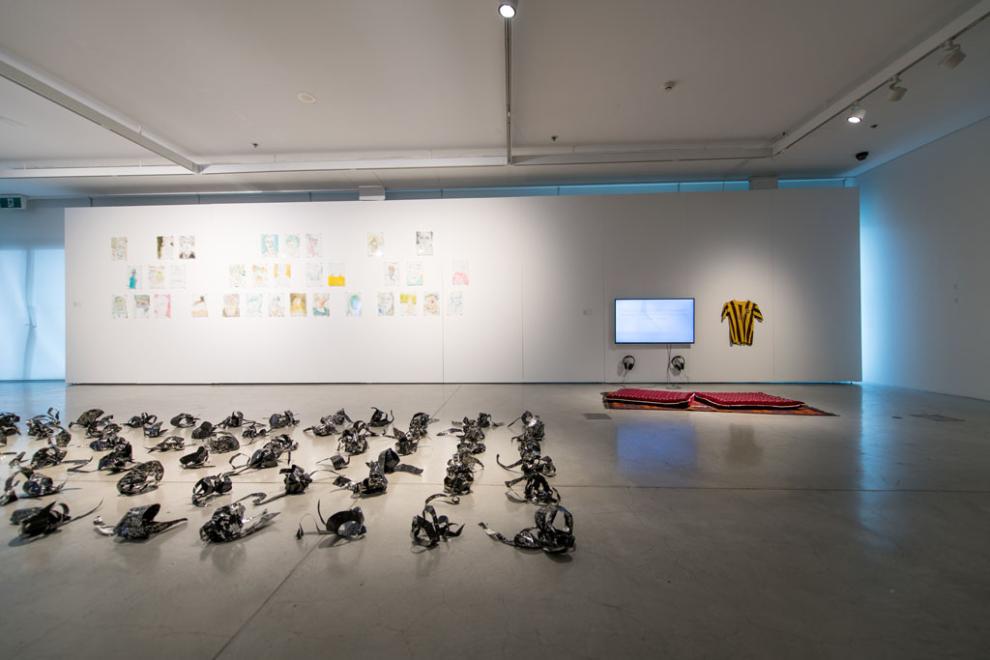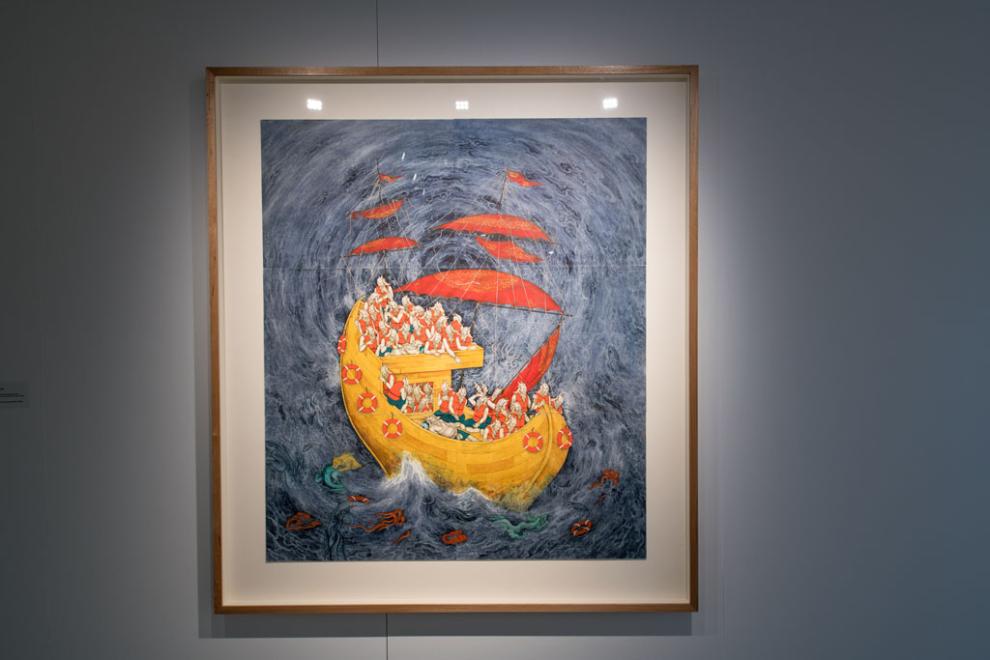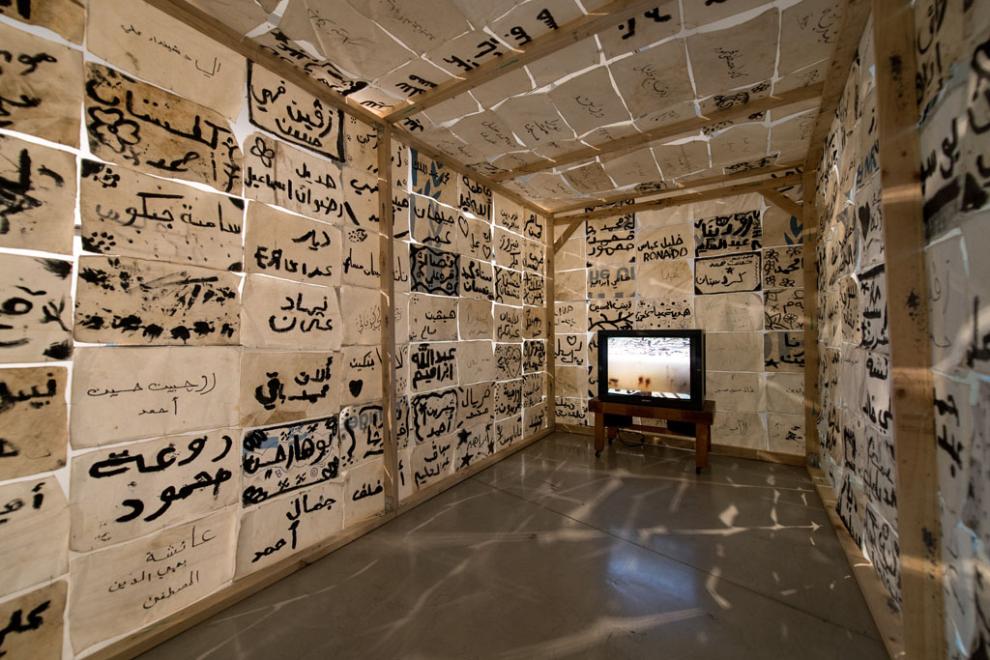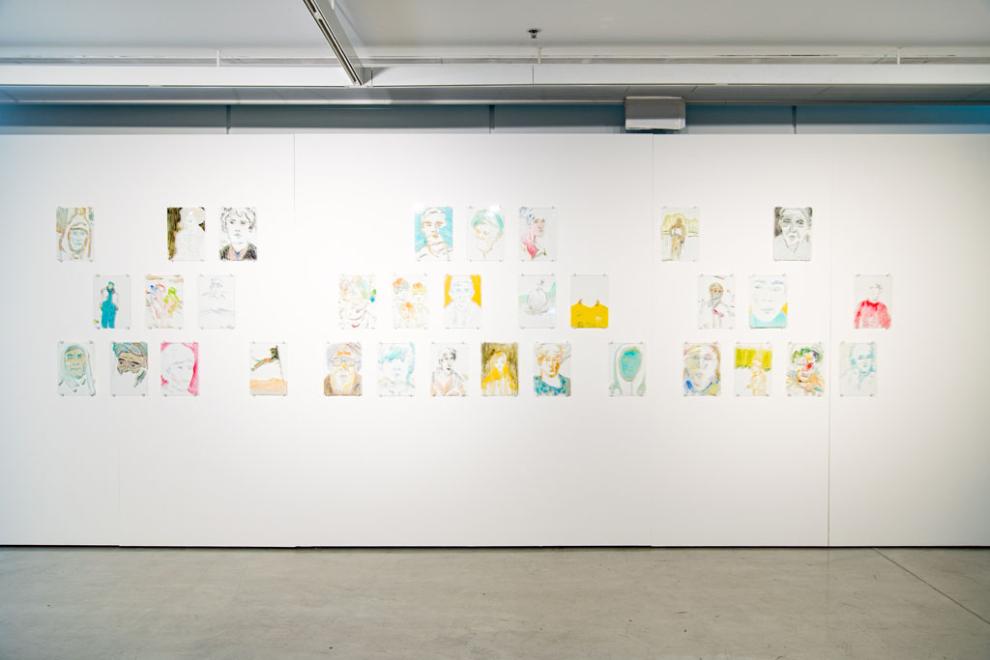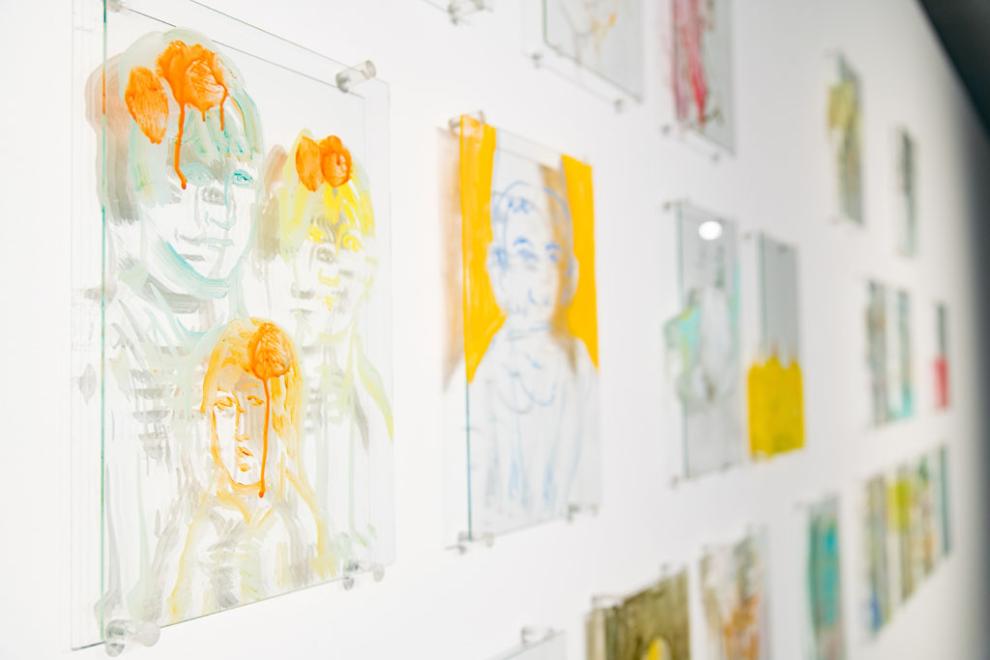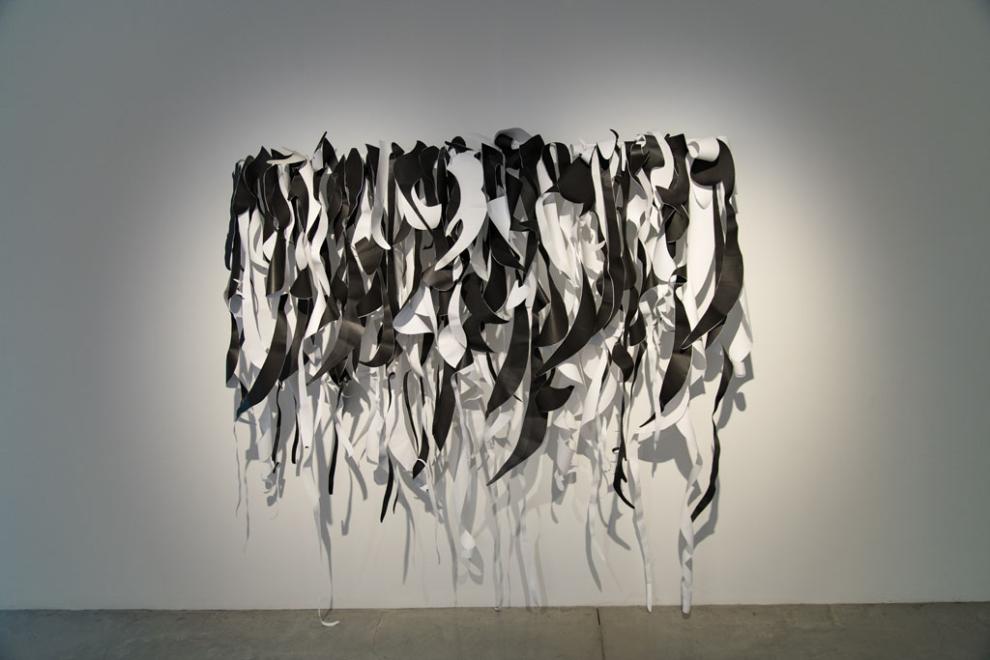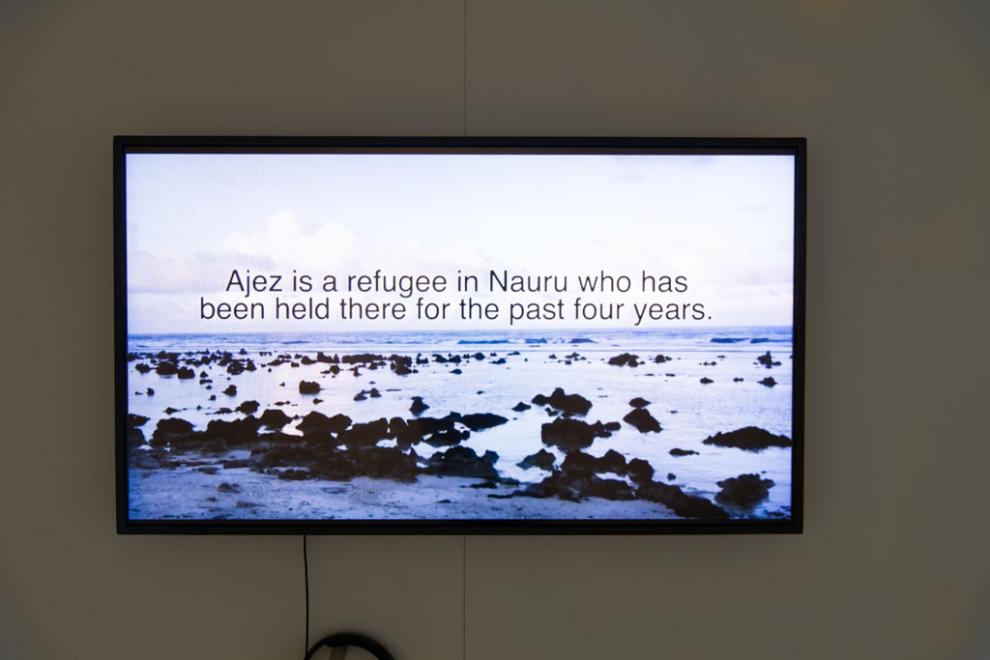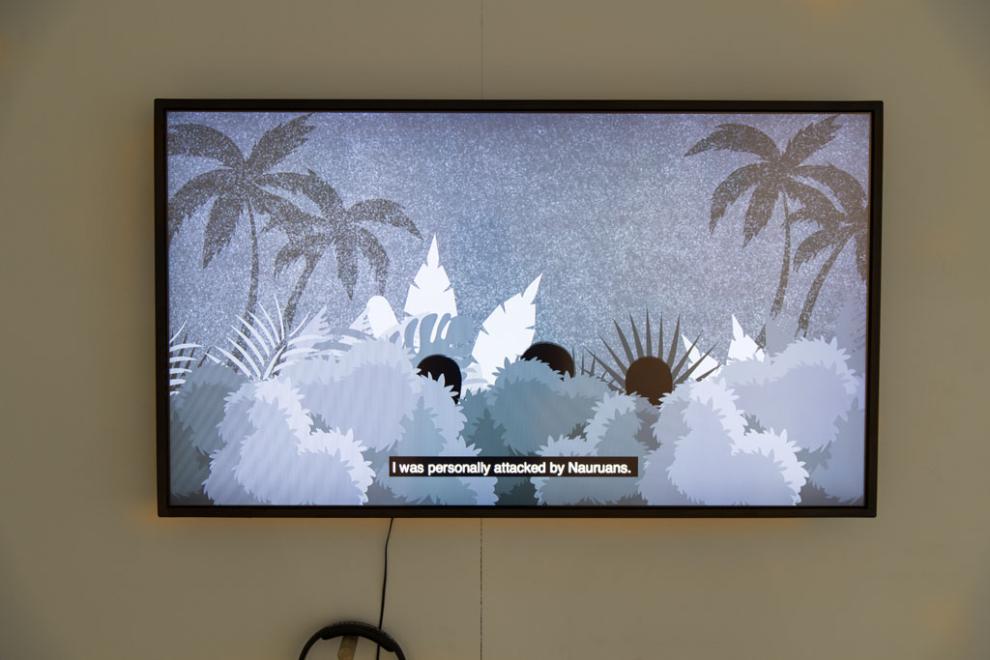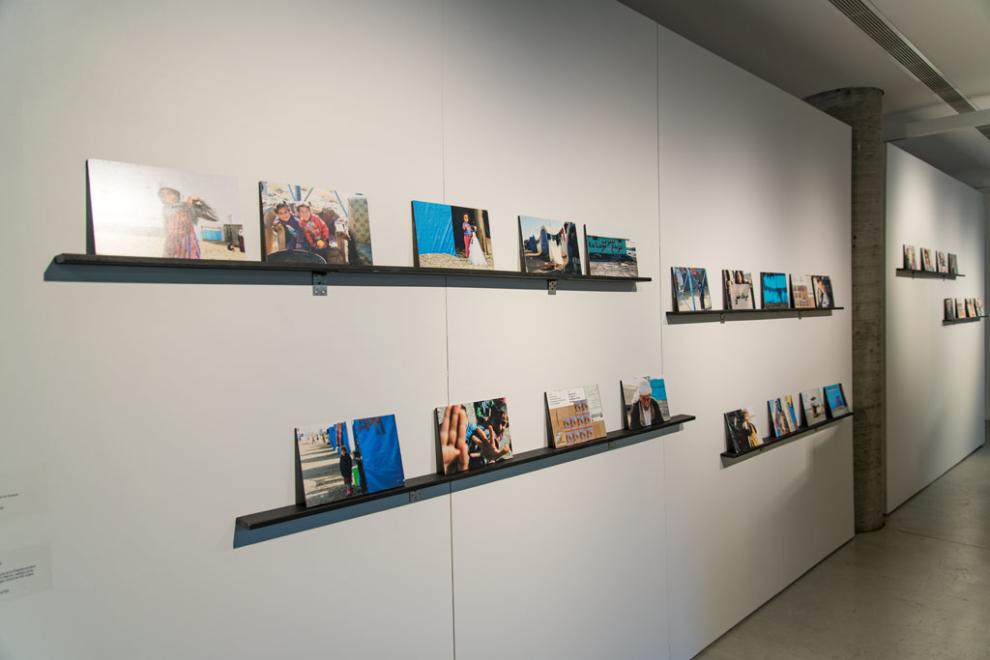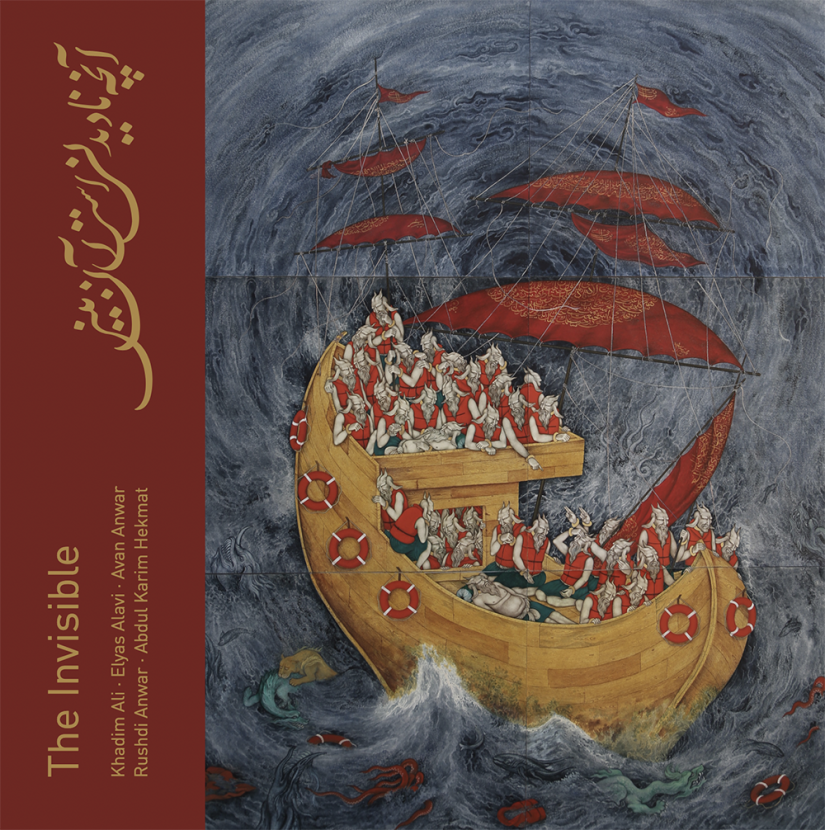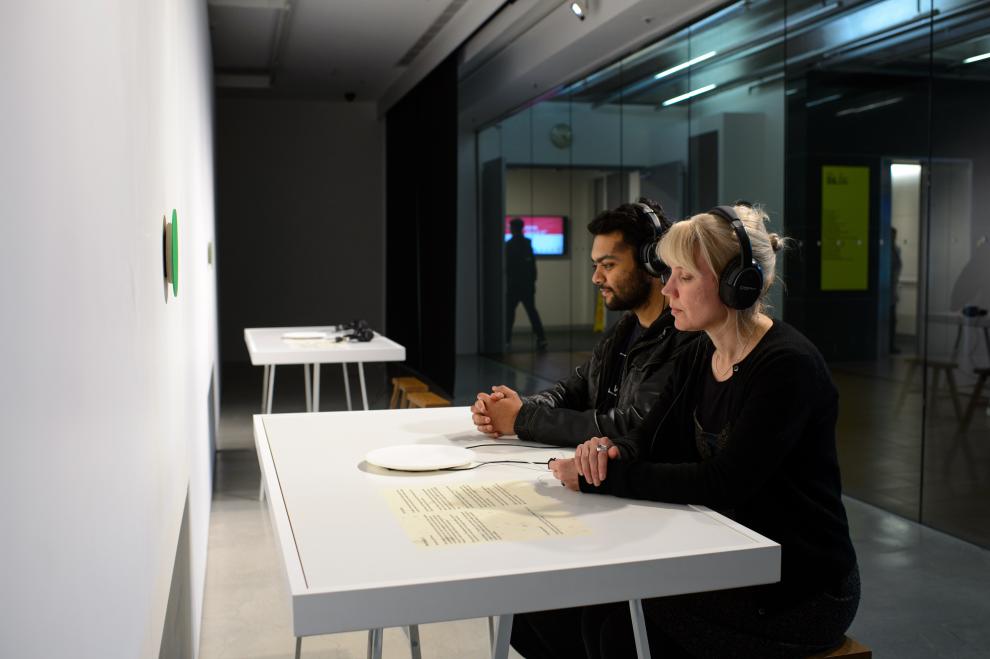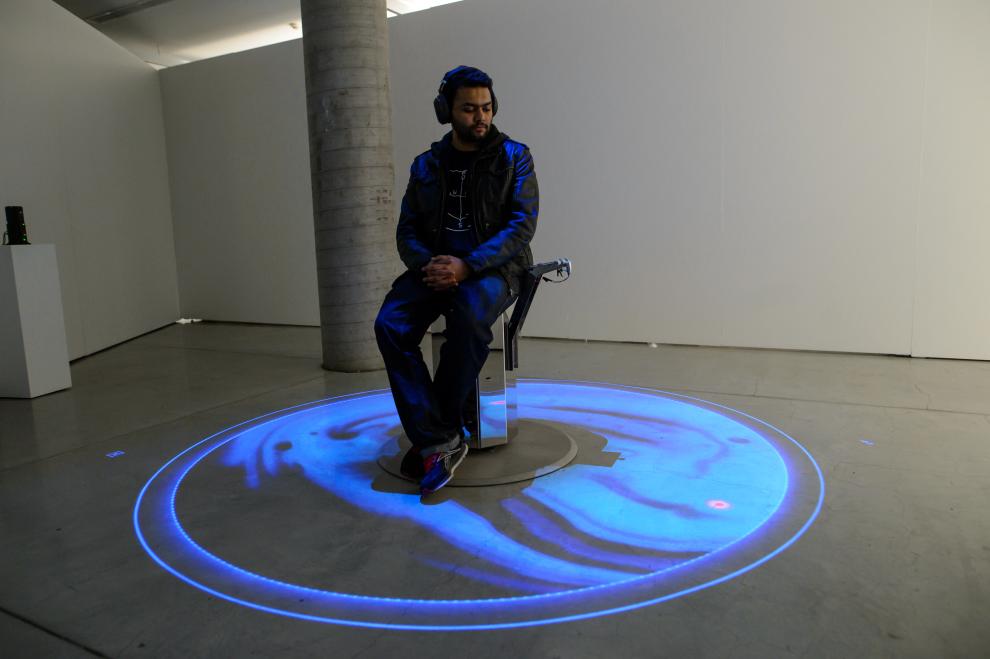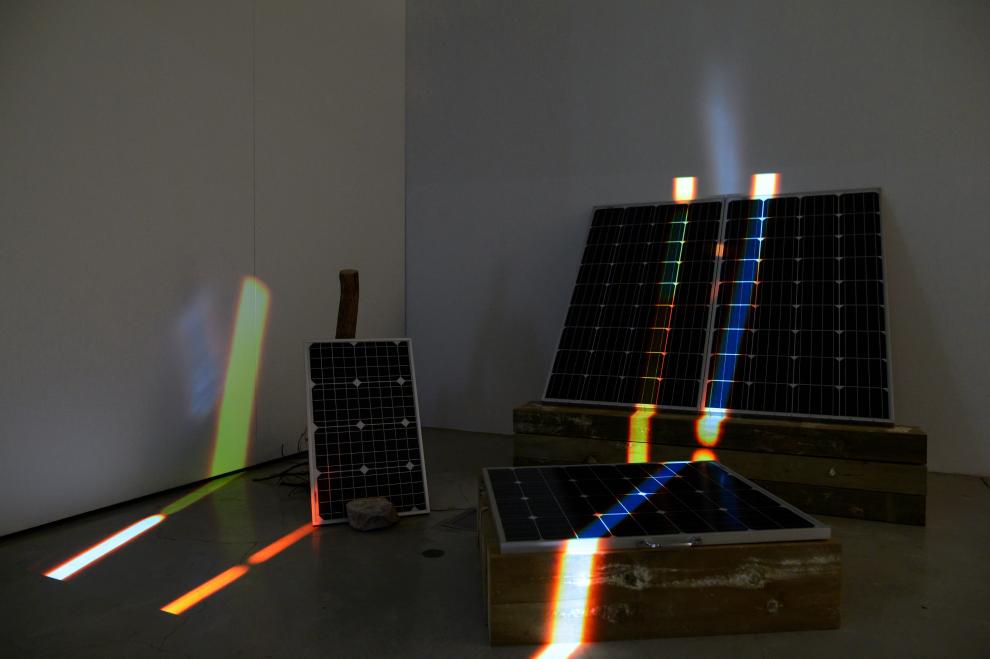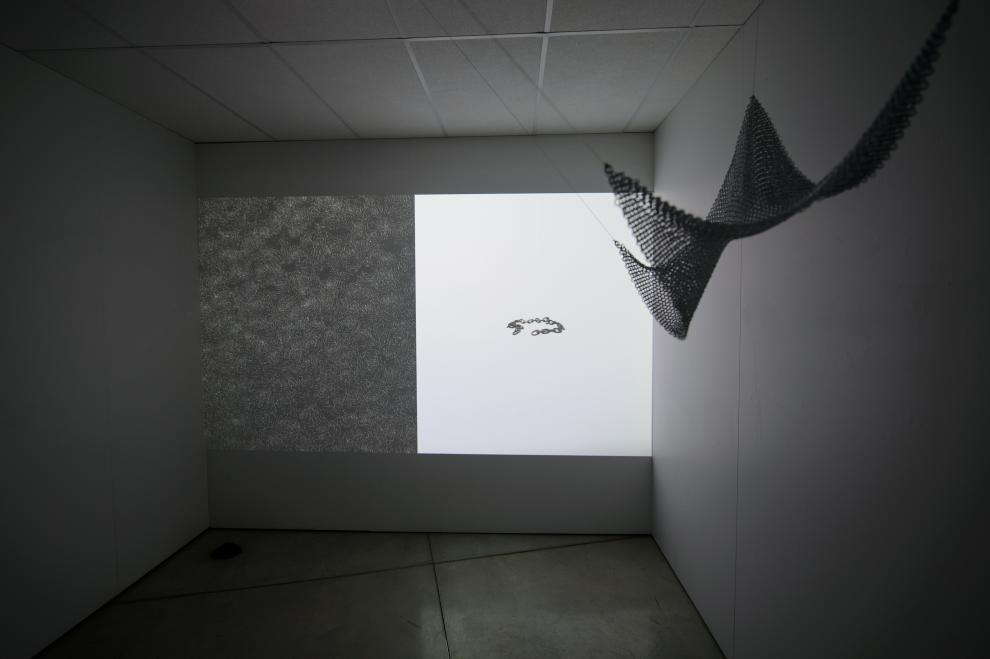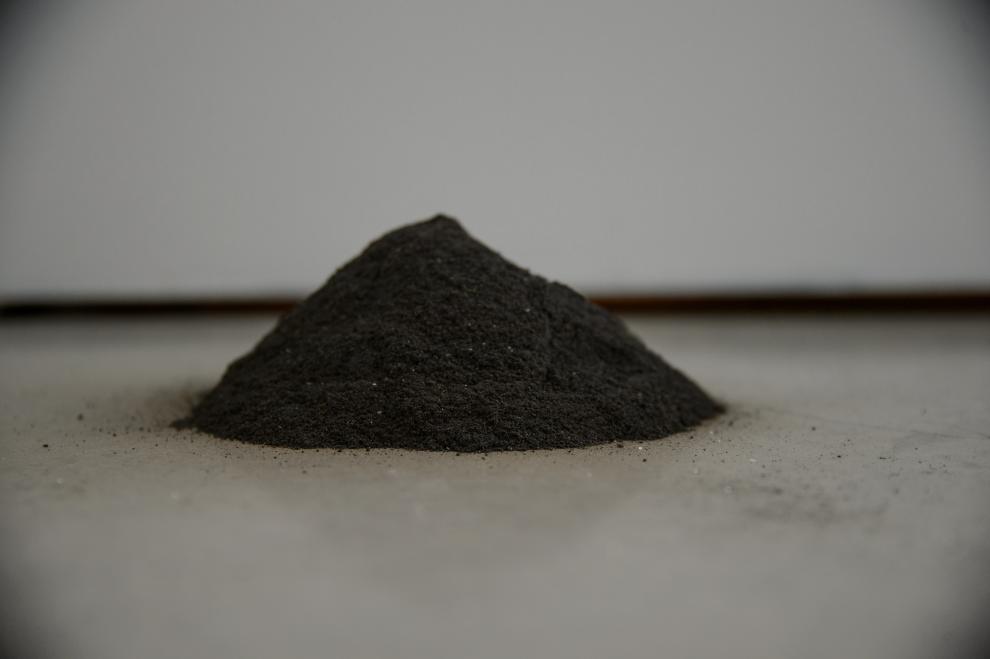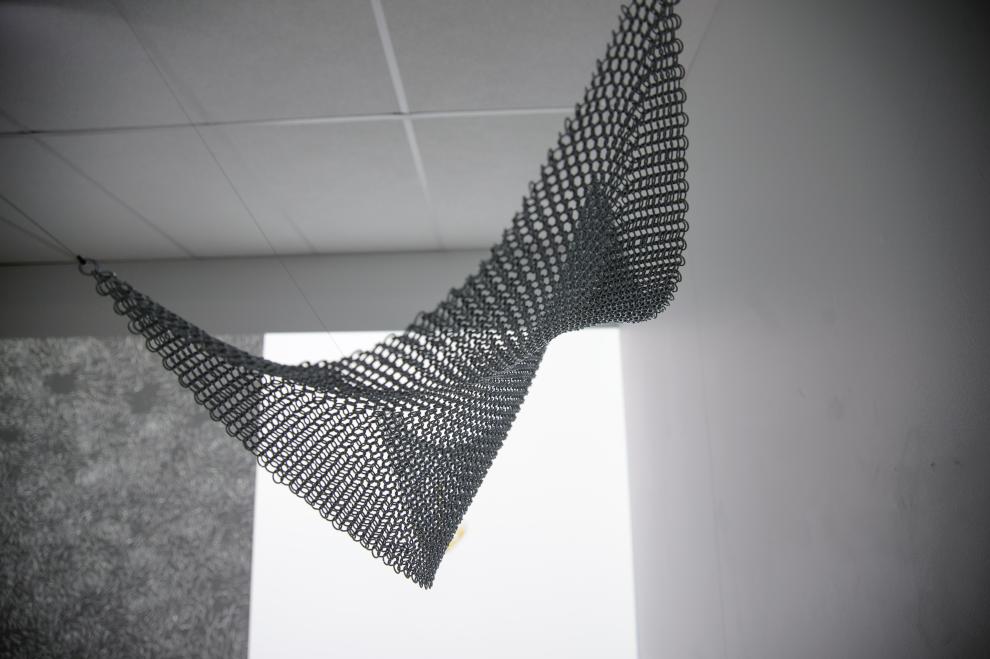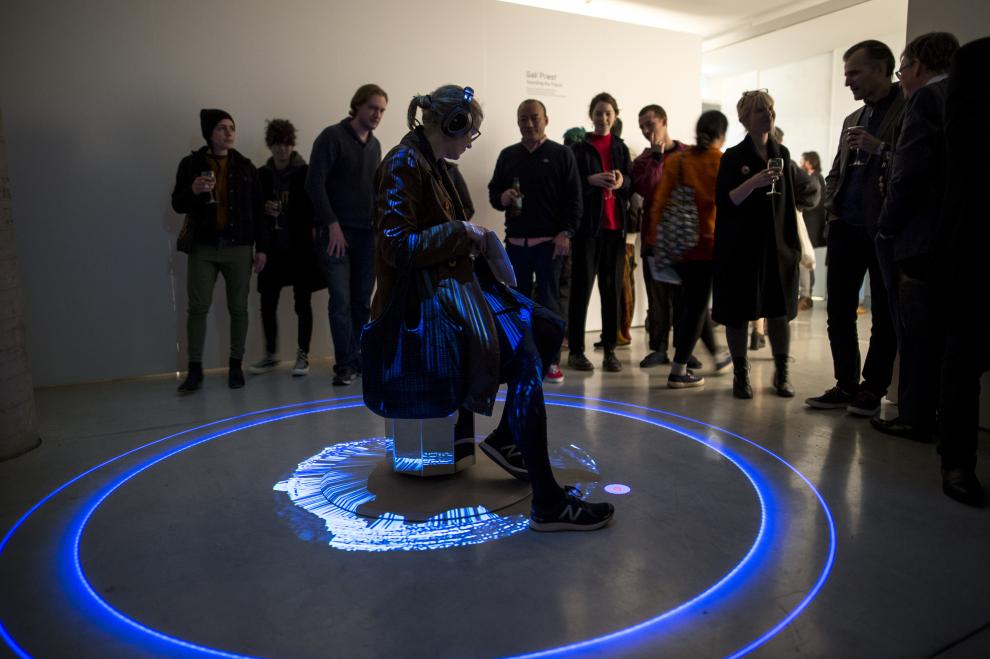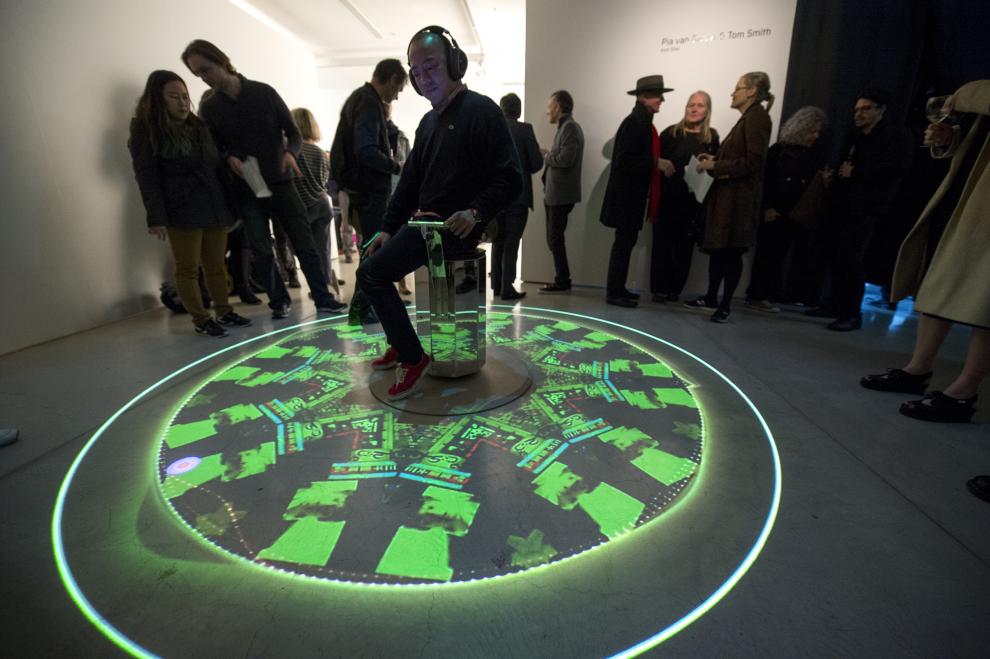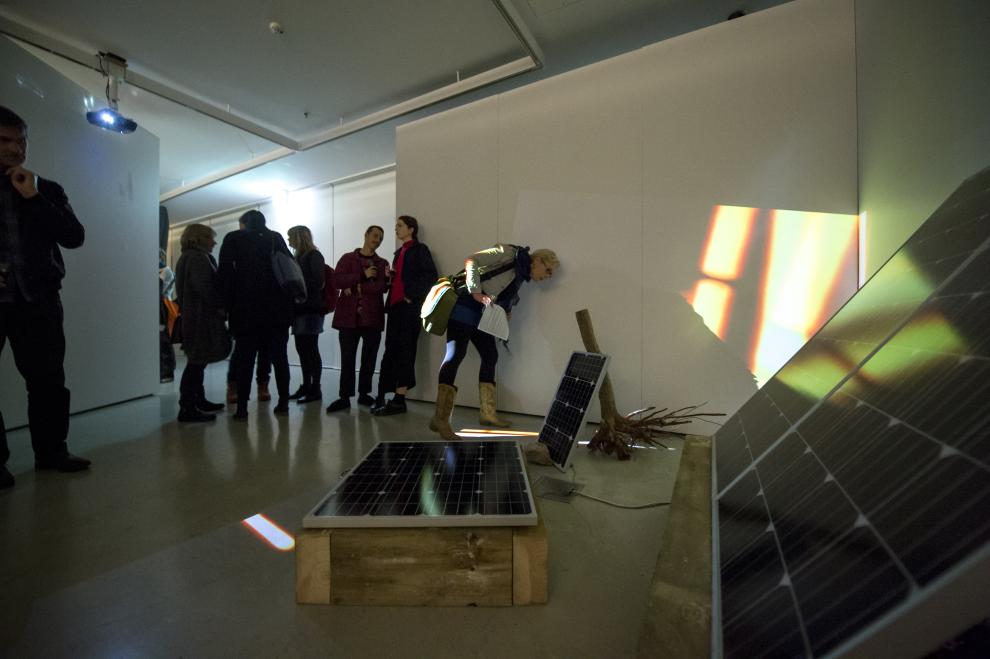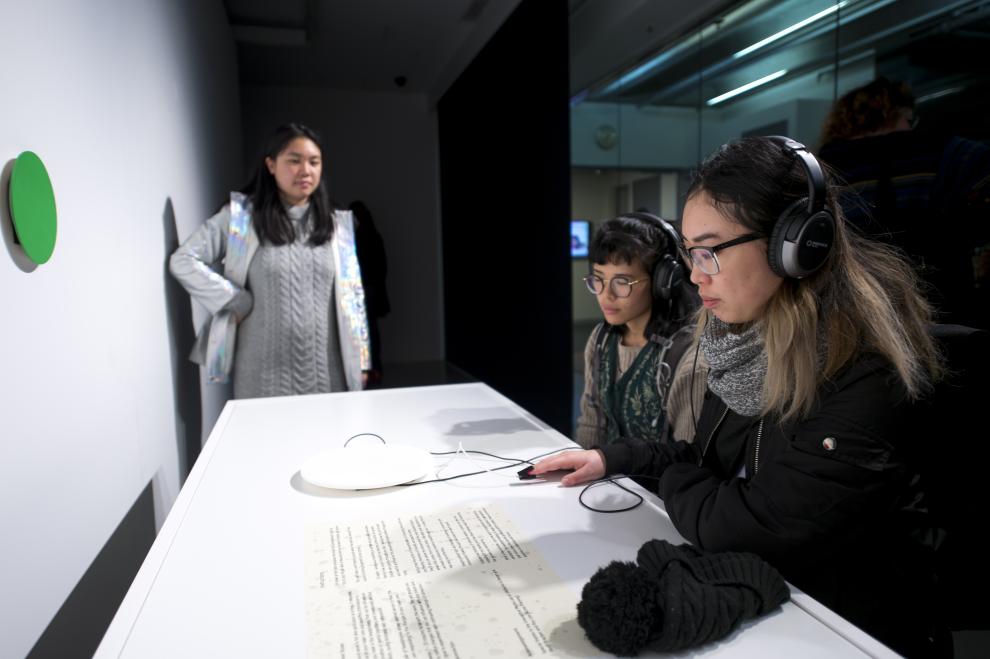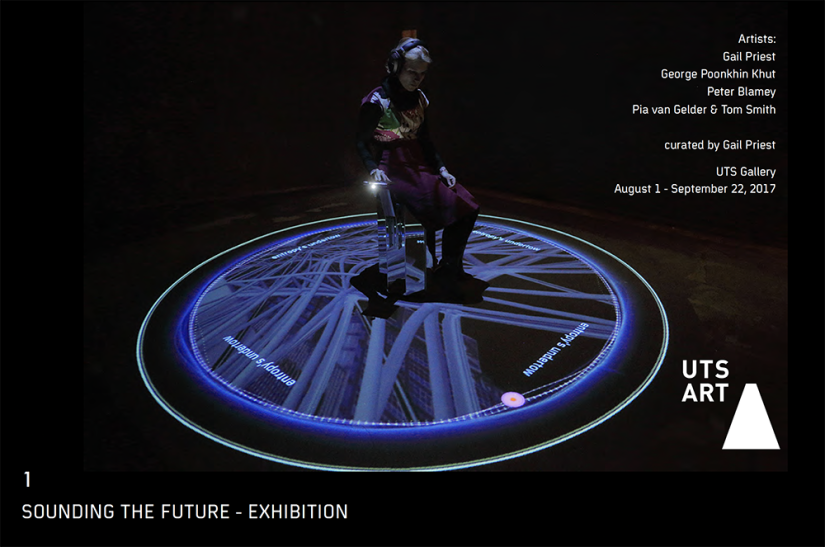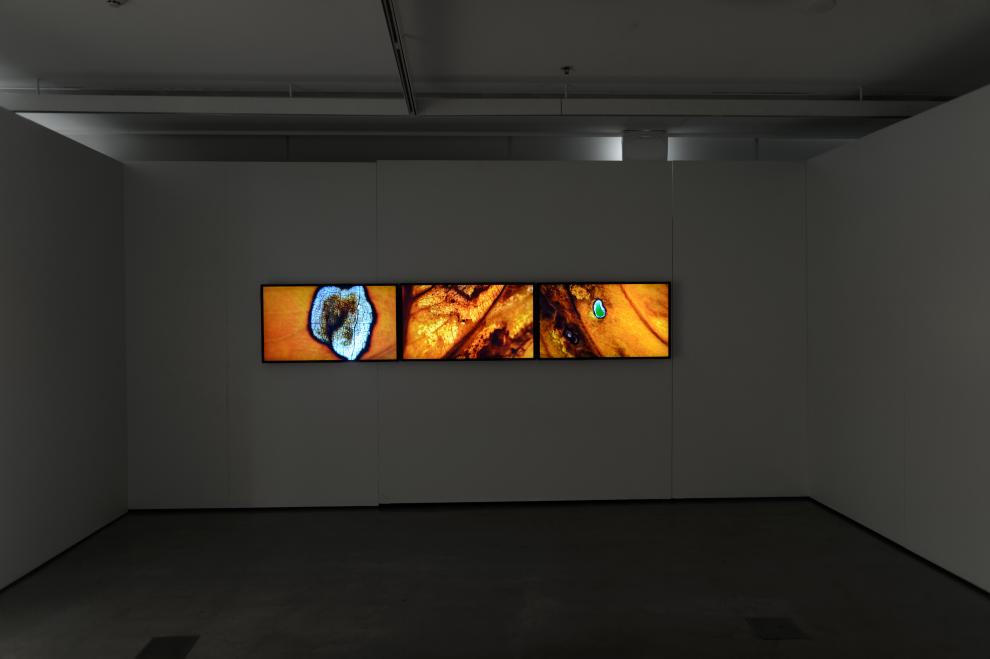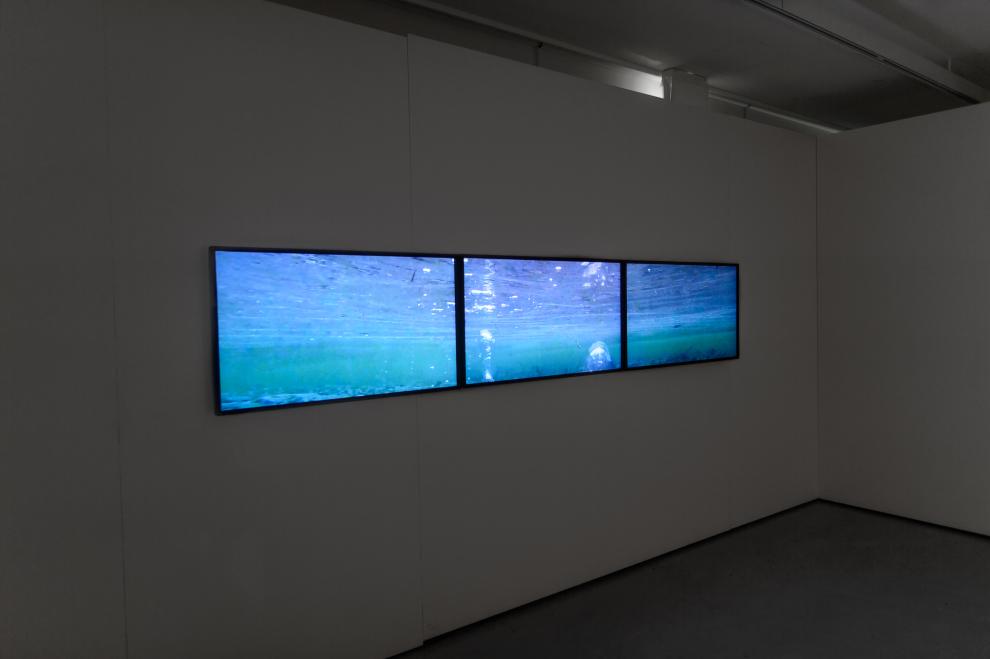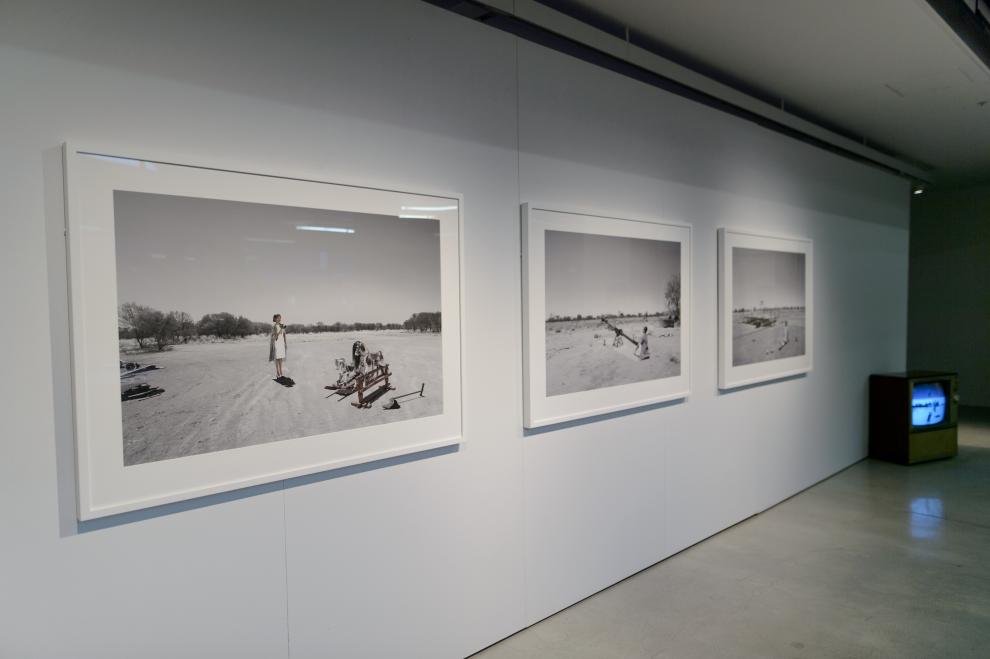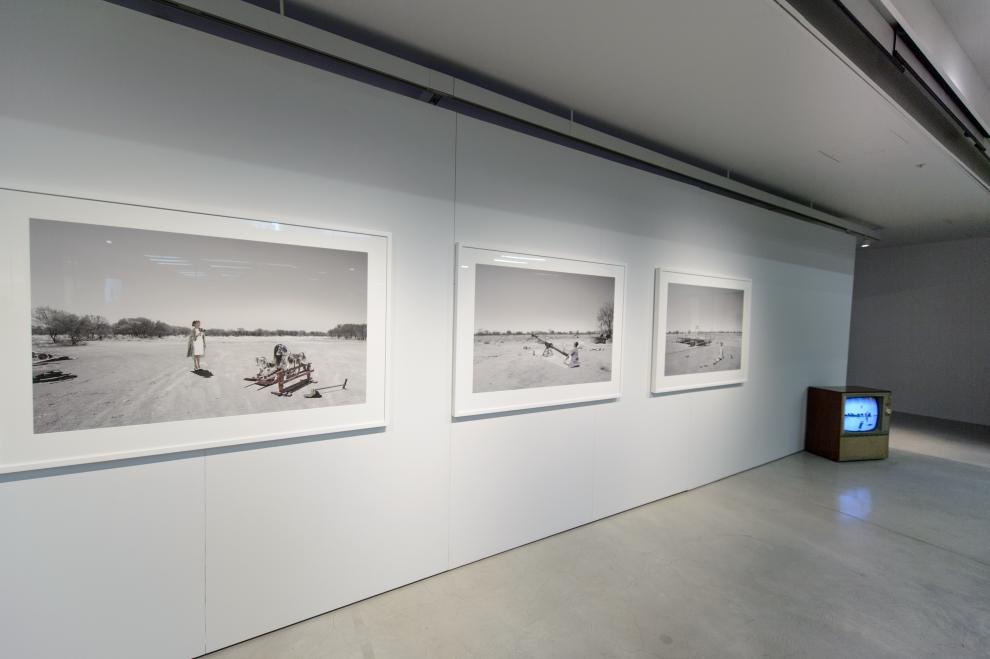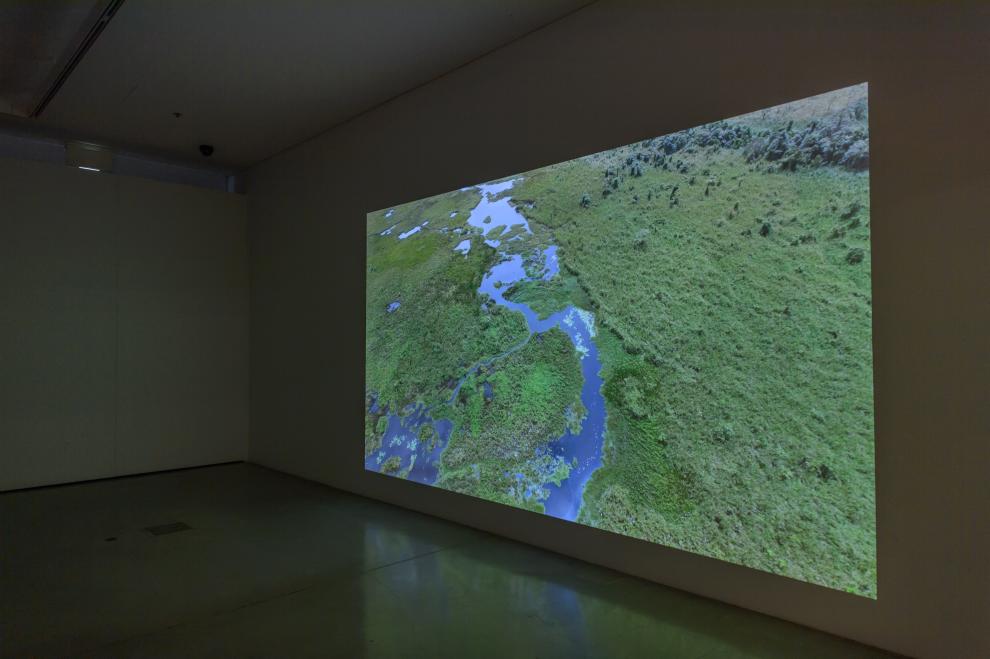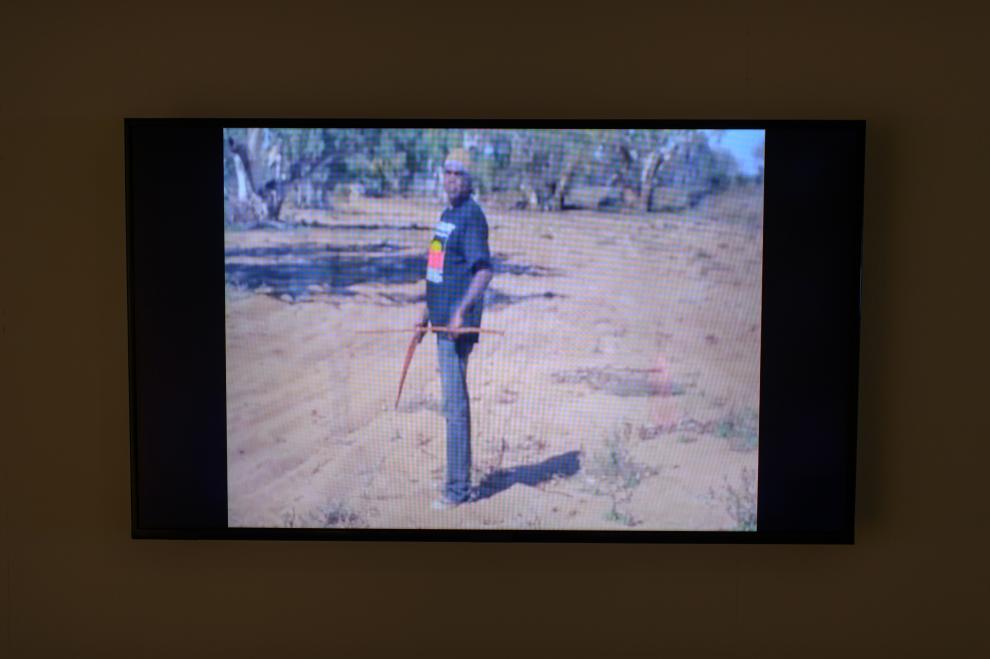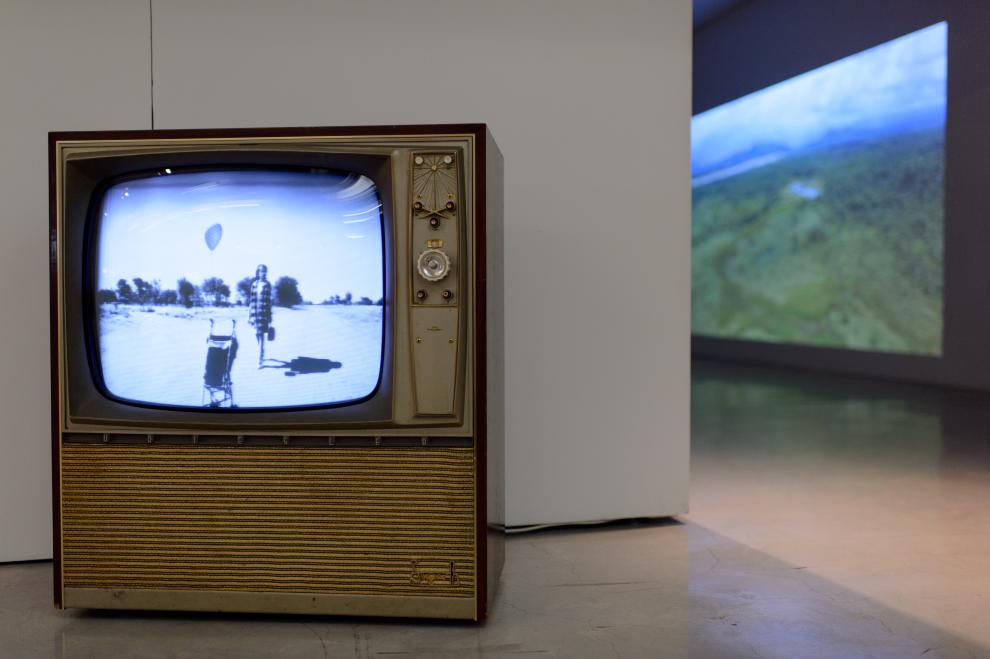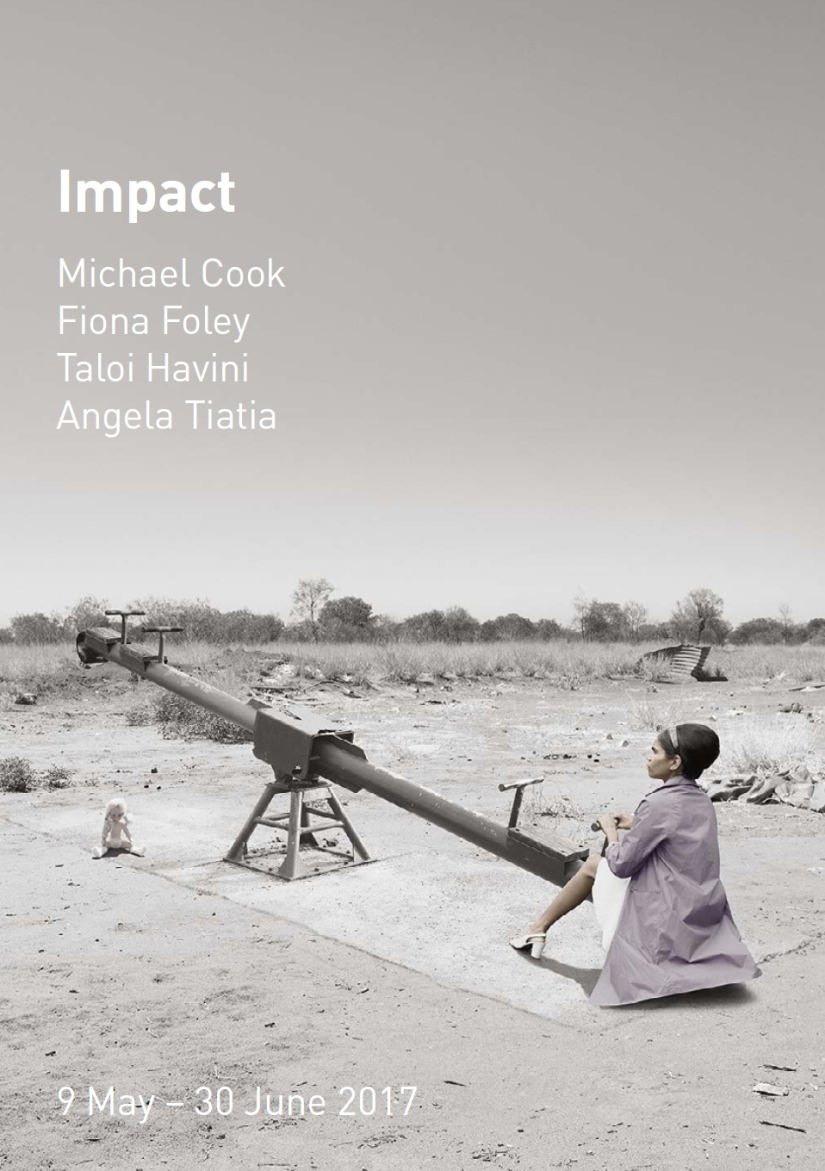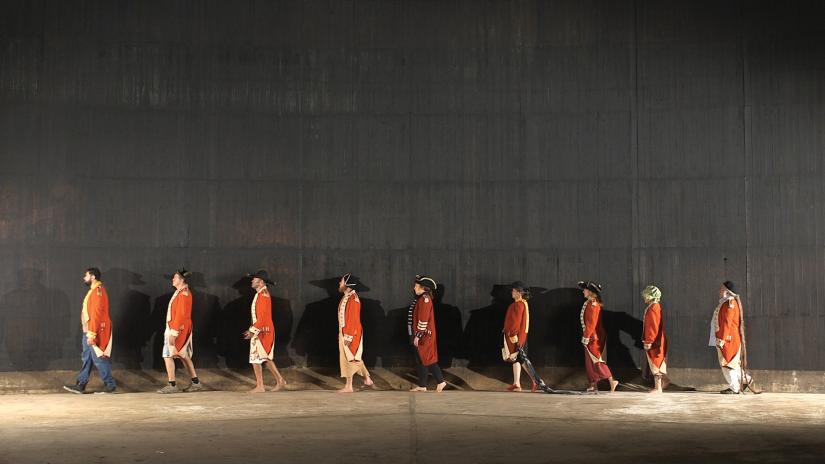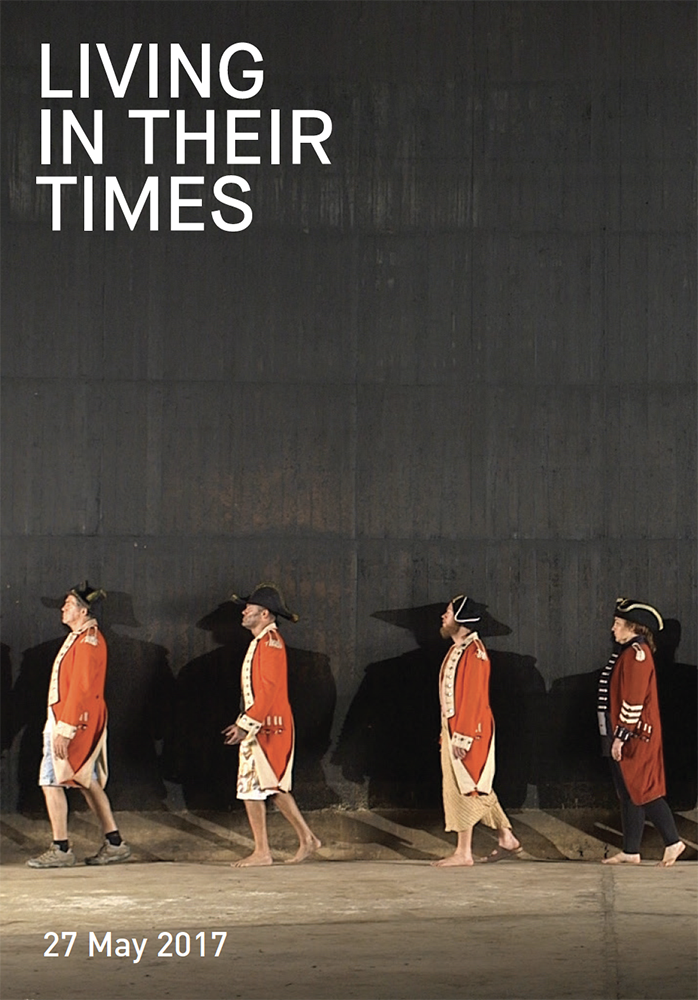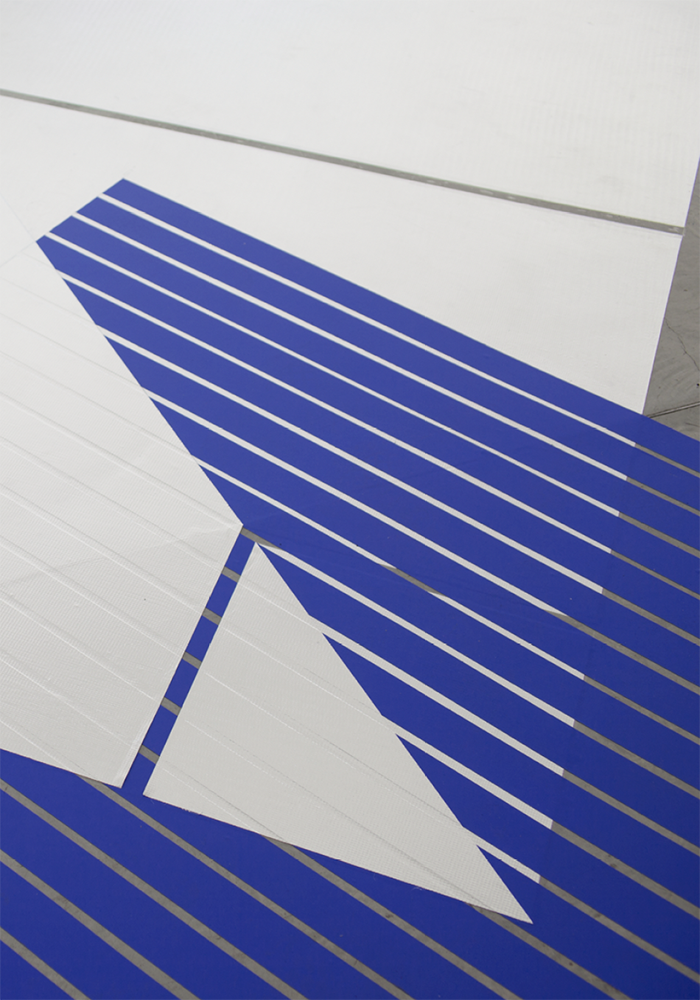The Invisible features new and recent work by artists Khadim Ali, Elyas Alavi, Avan Anwar, Rushdi Anwar and Abdul Karim Hekmat, who all draw on their own refugee backgrounds to create evocative and powerful works in painting, video, sculpture, installation and photography. The exhibition explores the effects of displacement, dispossession, migration, vilification, trauma and memory.
‘Refugees are blemished figures in Australia, which has become a global pattern now,’ says exhibition curator and artist Abdul Karim Hekmat. ‘Art is a powerful way to emphasise our humanity and commonality and create a humanising space for others to connect. We refugees after all are not so different.”
The artists transform both personal and collective experience to make visible the daily lives and struggles of people who are displaced by IS in the Middle East. Rushdi Anwar returned to his homeland of Kurdistan to spend four months in Iraqi refugee camps where 1.5 million people live in uncertainty. Working with local artisans and school-aged children he produced a unique recreation of a standard issue UNHCR family tent, giving insight into the daily life and experiences of those in the camps.
Avan Anwar transforms the words of the 19th century Kurdish poet Nali, whose writing was composed in exile from his homeland, into sculptural installations using fragile materials like paper, plaster and aluminium foil. By so doing she strips the text of its legibility, displacing the words from their meaning and reflecting the dramatic shift in cultural context faced by refugees in their new circumstances.
Exhibition curator and artist Abdul Karim Hekmat will present a video work composed from material recorded by refugees currently detained on Nauru. “This work gives visibility to those voices our government silenced and marooned on an Island where they face violence on a regular basis,” says Hekmat. Recent work by Khadim Ali will employ his traditional training in miniature painting to highlight the contemporary persecution and dehumanisation of refugees seeking asylum.
Elyas Alavi’s finely painted portraits on glass suggest the untold narratives of the 90 Hazara people killed in an IS bomb blast while protesting in the Afghanistan capital Kabul in 2016, an event the artist witnessed and survived. “Elyas survived a tragedy to tell the stories of those who did not through artwork,” Hekmat says. “We are all survivors of violence; terror and atrocity at some points in our lives,” Abdul said “The artworks in The Invisible are re-enactment of past traumatic memories or current experiences, of traces of deep wounds, which are not seen by many. That’s what this exhibition is about.”
The exhibition, catalogue and education program were supported by Create NSW.
Exhibition catalogue
Sounding the Future is an exhibition curated by Gail Priest that speculates about what art in the future will sound like.
The exhibition will present sonic “possibles and potentials” ranging from almost-here transhuman mediations, to far-future post-anthropocene aftermaths, with some apocalyptic contingencies in between. We always speak of “visions of the future,” but what if we were to let the auditory realm lead our imaginings? Does the dialogue about futurity take on new dimensions when considered through a different sense ratio? These dreams of future soundings, inflected by our present day, also offer reflections on how we listen now. The artists will develop new work that considers the impacts of new technologies, degrading environmental conditions and the prospect of a post-human world.
This exhibition is presented as part of National Science Week, Sydney Science Festival, UTS Diversity Week and UTS Open Day.
This project has been assisted by the Australian Government through the Australia Council, its arts funding and advisory body.
Exhibition catalogue
Impact is a touring exhibition from Cairns Regional Gallery which examines the long-term effects and ongoing presence of colonisation on First Nation communities in Australia and the Pacific region.
New media and video works by Michael Cook, Fiona Foley, Taloi Havini and Angela Tiatia explore narratives of dispossession, alienation, conflict, gender, race and history.
Michael Cook’s video work explores the untold consequences on members of the Stolen Generations from the 1870s until the 1970s. Set in the distinctive landscape of central Australia, Fiona Foley’s film, Vexed, similarly explores notions of loss, in this case, the theft of Aboriginal women by white men and the profound effect on traditional Aboriginal kinship marriages. Taloi Havini’s work looks at the devastated environment and the impact of social/political conflicts between the peoples of Bougainville and mining companies of Australia. Angela Tiatia’s work questions the effects of climate change on people’s lives, specifically in Tuvalu, in the South Pacific.
Impact is a touring exhibition from Cairns Regional Gallery, originally presented in partnership with Cairns Indigenous Art Fair 2016.
Exhibition catalogue
Living in Their Times reflects on the lineage of Aboriginal and Torres Strait Islander self-determination and activism that both preceded and followed the landmark 1967 Referendum, in which Australians voted to formally remove passages from the Australian constitution that discriminated against Aboriginal people.
Curated by Djon Mundine OAM, the program will activate several sites across the UTS campus with diverse stories. Larissa Behrendt, Director of Research at Jumbunna Institute states, ‘Jumbunna is proud to be supporting this important event that will allow for thoughtful reflection on the 1967 referendum through Djon Mundine’s creative vision.’ UTS ART and Jumbunna Institute are pleased to invite you to join us for a day of stories to commemorate the 50th anniversary of the 1967 Referendum, a landmark moment which saw Australians vote to remove passages of the Constitution that discriminated against Aboriginal and Torres Strait Islander people. This event is part of National Reconciliation Week 2017.
The program will include a restaging of Bungaree’s Farm, an immersive three channel video installation reflecting on the life of Bungaree, an important Aboriginal figure in colonial Australia and the first person to be referred to as an ‘Australian’. First staged at Mosman Art Gallery in 2015, this unique collaborative project led by Djon Mundine OAM explored the legacy of Bungaree through contributions by contemporary Indigenous artists including Daniel Boyd, Jason Wing, Peter McKenzie, Leanne Tobin, Amala Groom, BLAK Douglas (Adam Hill), Leah Flanagan, Sandy Woods, Chantelle Woods, Caroline Oakley, Bjorn Stewart, Karla Dickens and Warwick Keen.
Accompanying the special screening of Bungaree’s Farm will be a film program of shorts, documentaries and features curated by filmmaker and programmer Pauline Clague. This film selection will delve deeper into the diverse lives and times of Aboriginal people in the fight for self-determination and the continuation of sovereignty, and will include work by Darlene Johnson.
Mundine will also curate a display of works by the late Robert Campbell Jnr. (1944-1993), whose work captured his experience of discrimination growing up and living in the mid-North Coast region of New South Wales. In Campbell Jnr’s own words, ‘I paint about things that touch me personally – whatever has happened in my lifetime … When we were on the mission the old people were not allowed to talk the lingo – not allowed to teach us, they were too afraid they would be sent away.’
Event program
Responding directly to the architecture of UTS Gallery, Surface Tension aims to fold space and time through projected images and the insertion of reflective surfaces, creating ways for the viewer to become a part of the work.
The work is situated within the historical context of ‘expanded cinema’ and is therefore concerned with the nature of the projection and screen as well as the relationship of the mediation to the presence of the audience and the location of its presentation.
